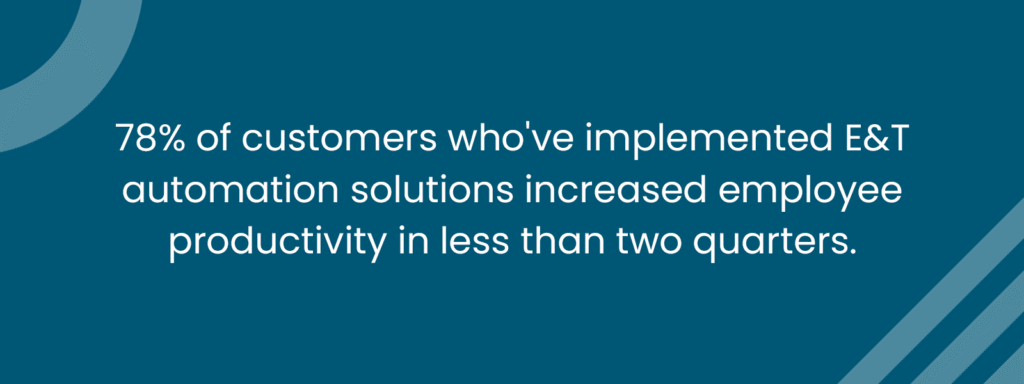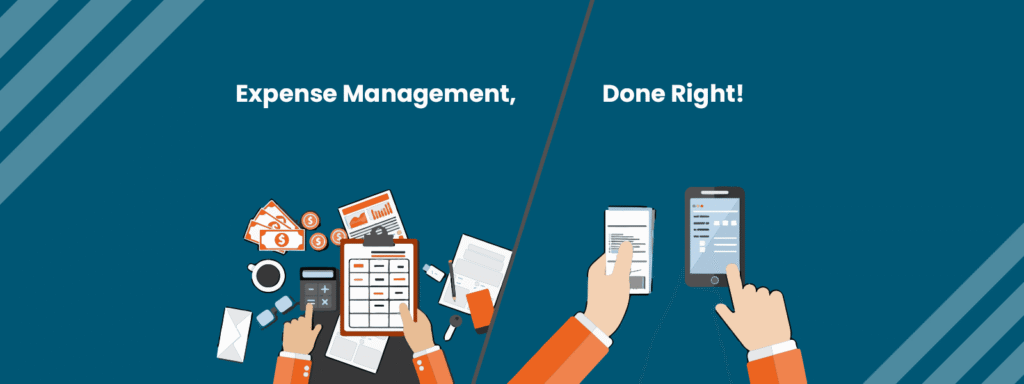The price? Bigger than one can imagine! According to GBTA, companies spend an average of $58 to process a single expense report manually, and fixing just one error can add $52 more.
But here’s the good part – businesses are now shifting from manual to semi-automated expense tracking, like spreadsheets and OCR tools and finally to fully automated systems. Automated expense tracking isn’t limited to business giants. Rather, mid-sized and small businesses are turning to expense tracking automation for real-time expense tracking. Several cloud-based expense management software solutions like ExpenseVisor, easily turn expense chaos into cost control. With operating expenses tracking, processing times are shorter, reimbursements are quicker, and error chances are lower.
In this blog, we’ll help you explore:
- What Is Automated Operating Expense Tracking?
- Manual vs. Semi-Automated vs. Fully Automated Expense Tracking – A Comparison
- Who Is Using Expense Management Software? (Secret – Almost Everyone)
- ExpenseVisor – Globe’s Trusted Choice for Automated Expense Tracking
- How to Switch From Manual Expense Tracking to ExpenseVisor’s Automated Operating Expense Tracking?
Manage Your Operating Expense Easily With ExpenseVisor
What Is Automated Operating Expense Tracking?
Expense tracking automation is a modern way of managing your business costs in a paperless manner. With automated operating expense tracking, you stay away from the headaches of paper trails and manual data entry. Instead of chasing receipts or spreadsheets, expense tracking automation uses intelligent software to record, categorise and report expenses in real time.
Imagine, AI-driven expense receipt scanning, real-time dashboards and instant approvals, all under one tab. It not only minimises human error and processing time but also gives finance teams full visibility and control. Be it a cut of office coffee or a client dinner, automated reporting ensures every penny is tracked and ready for review.

Manual vs. Semi-Automated vs. Fully Automated Expense Tracking - A Comparison
Now that we’ve unwrapped what expense tracking automation looks like, here’s how it stacks up. From lost receipts to error-free expense policy compliance and smooth expense reporting workflows, we’ve summed below how manual, semi-automated and fully automated systems compare.
Features | Manual Tracking | Semi-Automated | Fully Automated |
Tools Used | Paper receipts, spreadsheets and email threads | OCR apps, spreadsheet templates and policy reminder | Smart OCR, AI tools, real-time integrations with accounting and HR systems |
Data Capture | Receipts entered manually are often incomplete, incorrect or delayed | Scanned receipts and manual input for missing information | Real-time capture with instant data entry and smart scanning |
Categorisation | The user sorts expenses manually into basic categories | Manual or rule-based categorisation in spreadsheets | AI and smart detection tools categorise on the basis of merchant, amount and company policy |
Policy Compliance | For each report, manual checks and policy reviews are required | Spreadsheet rules or basic alerts may flag some violations | Auto-checks ensure real-time expense policy compliance with instant identification in case of policy violation |
Approval Workflows | Email-based manual approvals with higher chances of delays and missed steps | Form or email-based approvals with occasional reminders | Automated and instant approvals with instant notifications |
User Effort Required | Most tasks are manual and repetitive, requiring higher manual effort | Since it is a blend of automation and manual effort, moderate human input is needed | The system automates most tasks, requiring lower human effort |
Real-Time Visibility | Reports are submitted after the expense has occurred, giving zero visibility | Data is updated manually or in batches, giving limited visibility | Real-time dashboard with live updates by user, giving 100% visibility |
Risk of Errors | Very high, because manual entries are often prone to errors | Moderate chances of errors, but still possible | Next to zero due to smart automation |
Scalability | Hard to manage with a growing business, teams and locations | Suitable for mid-sized teams, but still not an ideal choice | An excellent option for growing organisations |
Who Is Using Expense Management Software? (Secret - Almost Everyone)
Many businesses around the world are moving away from long email threads and messy spreadsheets. Rather, they’re using modernised, automated expense tracking. Here are a few industries leading the way.
Finance & Insurance
As per a report, banks and investment firms are turning to automated expense tracking! 68% of them have now automated over 70% of their expenses because it helps them stay efficient, cut costs and be audit-ready.
Hotels And Travel Agencies
The travel and hospitality industry is now ditching paper receipts and adapting to expense-tracking automation. It helps them track expenses like per diems and room costs in real time.
Logistics And Construction
From project budgets to tracking fleet fuel, these industries save expenses with auto operating expenses tracking.
Hospitals & Medicine
Hospitals and healthcare centres are big fans of expense-tracking automation. According to research, automated expense management software helps hospitals reduce errors by 52%.
Tech Firm
Tech firms use expense management software for real-time expense tracking that helps them save 25% to 40% expenses.
Not only for day-to-day operations, but companies are now turning to automated expense tracking for business trips, too. We have covered a detailed blog about Why Smart Companies Are Investing in Real-Time Travel Expense Tools.

ExpenseVisor - Globe’s Trusted Choice for Automated Expense Tracking
More and more businesses are moving to automated expense tracking, but what really matters is the way they make the switch. Here’s when ExpenseVisor steps in, with modern, powerful and easy-to-use features that take the stress out of expense tracking. Be it snapping receipts or fast-tracking urgent approvals, ExpenseVisor is the no.1 choice of industries across the globe.
Real-Time Receipt Capture with DocScan
With ExpenseVisor’s modern DocScan feature, employees can capture and upload receipts in real-time using their mobile phones. Every expense is tracked in real-time, making expense tracking quicker, more accurate and paperless.
Workflow Bump for Urgent Approvals
Witness no more delays with the Workflow Bump feature! This feature prioritises urgently required approvals and bumps them to the top! This enables faster and smoother approvals, keeping your business moving.
Vendor Spend Analytics
Not sure where your entire budget goes? The Vendor Analytics feature of ExpenseVisor gives you a clear overview of all vendor-related expenses, tracks spending patterns and helps you make smarter budgeting decisions.
Spend Pre-Approval for Better Control
With this feature of ExpenseVisor, you can take control before the money leaves the account. Using this feature, managers can approve or reject expense requests before they happen, keeping spending aligned with budgets and ensuring full expense policy compliance.
How to Switch From Manual Expense Tracking to ExpenseVisor’s Automated Operating Expense Tracking?
Evaluate your current process
See how your team tracks expenses right now. What’s working and what’s not?
Understand your requirements
See your team’s size, the number of expenses you handle and how strict your expense policies are.
Choose the right tool, like ExpenseVisor
Choose a system like ExpenseVisor that is great for real-time tracking, fast approvals and easy reporting.
Take your team in the loop
Speak to your team and update them about the change. Get regular feedback to know the loopholes.
Start with small steps
Test the system with one team first. If it goes well, then slowly align it with every team.
![]()
Manage Your Operating Expense Easily With ExpenseVisor
Manual vs automated expense reporting has always been a topic of debate! But with advancements happening every now and then, expense tracking automation has become an absolute compulsion. If you’re planning to switch to automated expense tracking, get in touch with ExpenseVisor for a demo.



